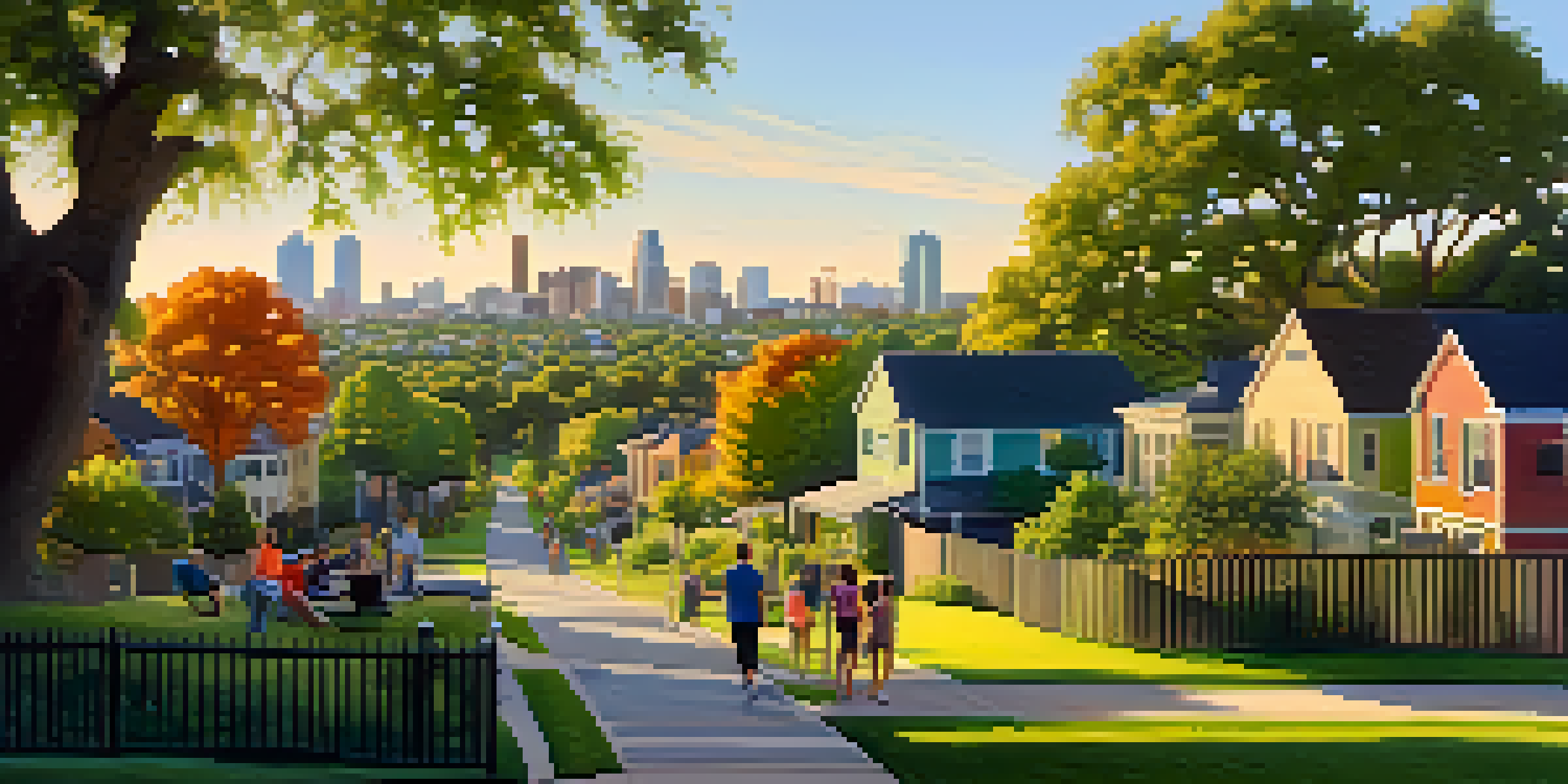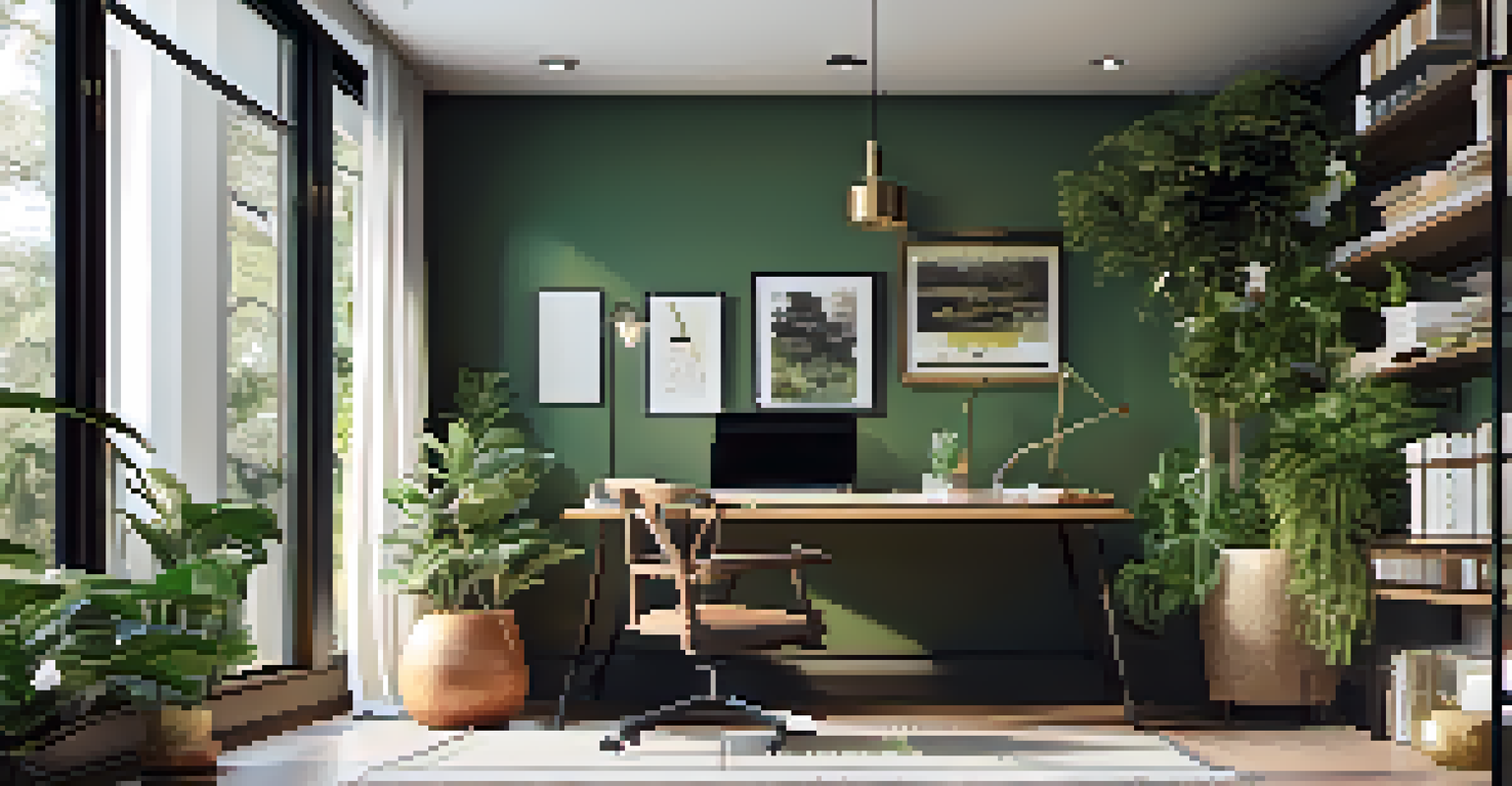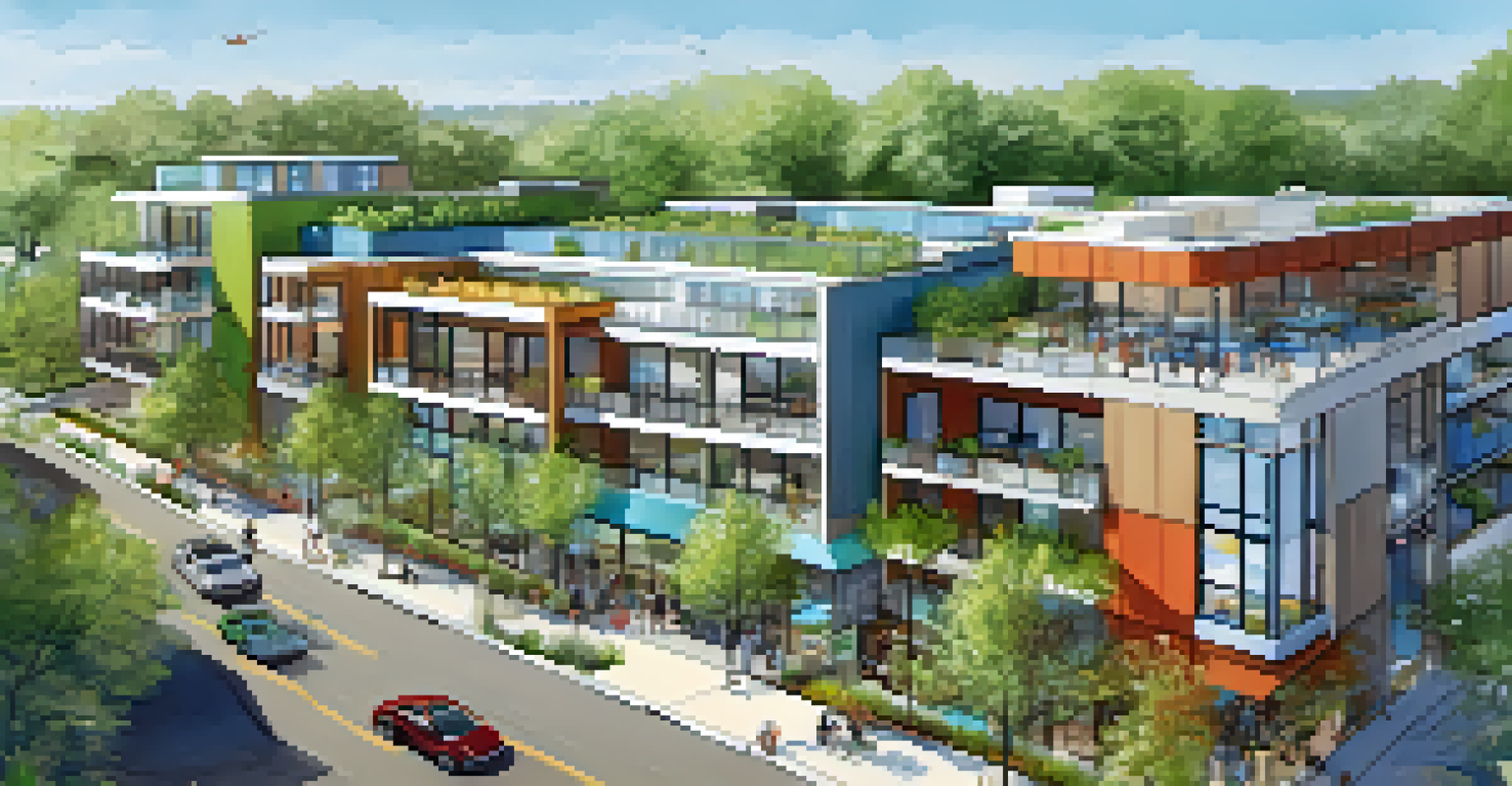The Influence of Remote Work on Austin's Housing Market Growth

Remote Work: A Game Changer for Austin's Housing Market
The rise of remote work has fundamentally altered how people view housing. With more flexibility, many are reconsidering where they want to live, leading to a surge in demand in areas like Austin. This demand is not just about proximity to the office anymore; it's about lifestyle, amenities, and community.
The future of work is not about where you work, but how you work and live.
Austin, known for its vibrant culture and tech scene, is particularly appealing to remote workers. The city's unique blend of urban and outdoor experiences attracts those seeking both career opportunities and a high quality of life. As a result, the housing market has seen an influx of buyers eager to settle in this dynamic city.
Moreover, this shift has spurred many individuals and families to prioritize space and comfort over proximity to traditional office settings. Larger homes with home offices and outdoor spaces have become highly sought after, driving up prices and changing the landscape of available properties.
The Surge in Housing Demand: Causes and Effects
As remote work continues to gain traction, Austin's housing demand has skyrocketed. This increase can be attributed to a variety of factors, including the city's reputation for being tech-friendly and its appealing lifestyle. People are moving from more expensive urban centers, seeking a better balance between work and life.

This influx of new residents has led to heightened competition in the housing market. Prices have escalated, often outpacing wage growth, making it challenging for long-time Austinites to find affordable housing. The once manageable market has transformed into a hotbed of bidding wars and fast sales.
Remote Work Drives Housing Demand
The rise of remote work has led to increased demand for housing in Austin, as more individuals seek spacious homes that cater to a desirable lifestyle.
In response, developers are racing to keep up with demand, but the rapid growth raises concerns about sustainability and community impact. While new housing projects can alleviate some pressure, it's essential to consider how these changes affect the local infrastructure and culture.
The Shift in Housing Preferences Post-Pandemic
The pandemic has shifted the housing preferences of many individuals and families. Remote work has made it possible for people to prioritize different aspects of their living environment, leading to a desire for more spacious homes. Features like home offices, backyards, and proximity to parks have become critical in the buying decision process.
Gentrification is not just about the physical displacement of residents; it's about the cultural and social displacement of communities.
In Austin, this change reflects a broader trend where buyers are willing to invest more for comfort and functionality. The need for personal space has driven many to seek out properties that offer more than just a roof over their heads. They want homes that cater to a lifestyle that blends work and leisure seamlessly.
These evolving preferences have also led to a rise in interest for suburban and even rural areas surrounding Austin. Buyers are increasingly open to exploring neighborhoods that may have been overlooked previously, further diversifying the housing market in the region.
Price Trends: A Closer Look at the Numbers
Austin's housing market has seen substantial price increases over the past few years, a trend fueled primarily by the remote work shift. According to recent statistics, median home prices have surged, sometimes exceeding expectations. This trend highlights the growing demand for homes as more people flock to the city.
For example, homes that once sat on the market for weeks are now selling in days or even hours. This rapid turnover is indicative of a competitive market where buyers are eager to secure their dream homes before prices climb even higher. It’s a stark contrast to pre-pandemic conditions, where a more balanced approach was common.
Price Surge Challenges Affordability
Austin's housing market has experienced significant price increases, making it difficult for long-time residents and first-time buyers to find affordable options.
While this price growth may benefit sellers, it poses challenges for first-time homebuyers and those looking for affordable options. The disparity between supply and demand continues to raise concerns about housing accessibility in the city, prompting discussions about potential solutions.
The Role of Technology in the Housing Market
Technology has played a pivotal role in Austin's housing market evolution, particularly in the context of remote work. Virtual tours, online listings, and digital transactions have streamlined the home-buying process, making it easier for buyers to explore options from afar. This shift has made Austin more accessible to those relocating from different states or even countries.
With the rise of tech-savvy real estate platforms, potential buyers can now research neighborhoods and compare properties without stepping foot in the city. This convenience has expanded the buyer pool, bringing in interest from outside areas that may have previously been less engaged with the Austin market.
However, the reliance on technology also introduces challenges, such as the risk of buyers making hasty decisions without fully understanding the local market. As the landscape continues to evolve, it’s crucial for both buyers and sellers to stay informed and make decisions based on comprehensive information.
Community Impact: Gentrification and Displacement Concerns
While the influx of remote workers has invigorated Austin's economy, it has also raised concerns about gentrification and displacement. As housing prices soar, long-time residents may find themselves priced out of their neighborhoods, leading to a loss of community identity. This transformation is a double-edged sword, as it brings growth but also risks marginalizing those who have called Austin home for years.
The cultural fabric of Austin is one of its most distinguishing features, and rapid demographic changes can threaten that uniqueness. With newcomers flocking to the city, there’s a growing need for conversations about inclusivity and the preservation of neighborhoods that reflect the city's diverse history.
Gentrification Raises Community Concerns
The influx of new residents has sparked fears of gentrification and displacement, threatening the cultural identity of long-standing neighborhoods in Austin.
Local governments and community organizations are increasingly addressing these issues by exploring affordable housing initiatives and support for residents facing displacement. It’s essential to strike a balance between welcoming new residents and ensuring long-time Austinites can continue to thrive in their communities.
Looking Ahead: The Future of Austin's Housing Market
As remote work continues to shape Austin's housing market, the future looks both promising and uncertain. With ongoing demand for housing, it's likely that the market will continue to evolve, adapting to changing needs and preferences. Developers and city planners will need to stay ahead of trends to ensure that growth is sustainable and beneficial for all residents.
Future developments may focus on creating mixed-use spaces that blend residential, commercial, and recreational elements. This approach could foster a sense of community while addressing the demand for housing. The goal will be to create environments where people can live, work, and play in harmony.

Ultimately, the impact of remote work on Austin's housing market will depend on how well the city navigates these changes. By prioritizing inclusivity, sustainability, and community well-being, Austin can continue to grow while preserving the essence that makes it a great place to call home.